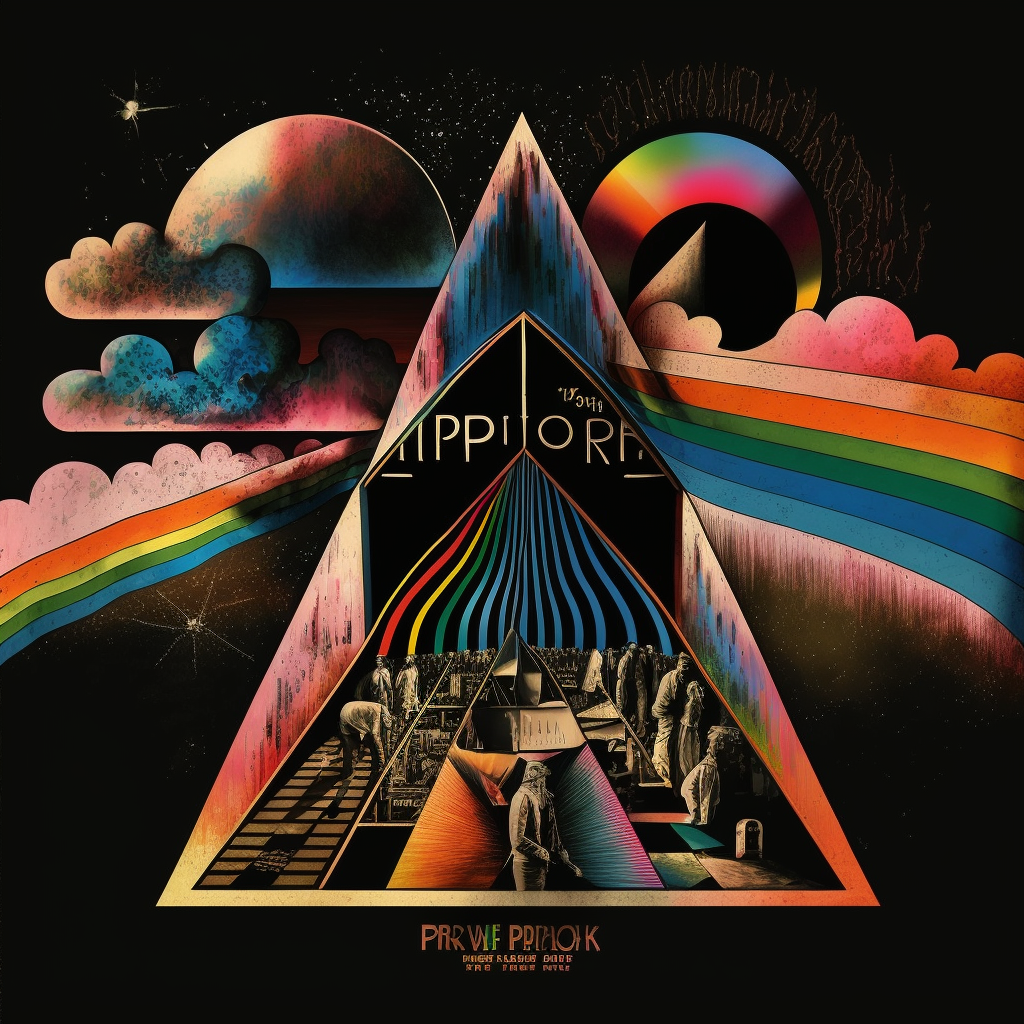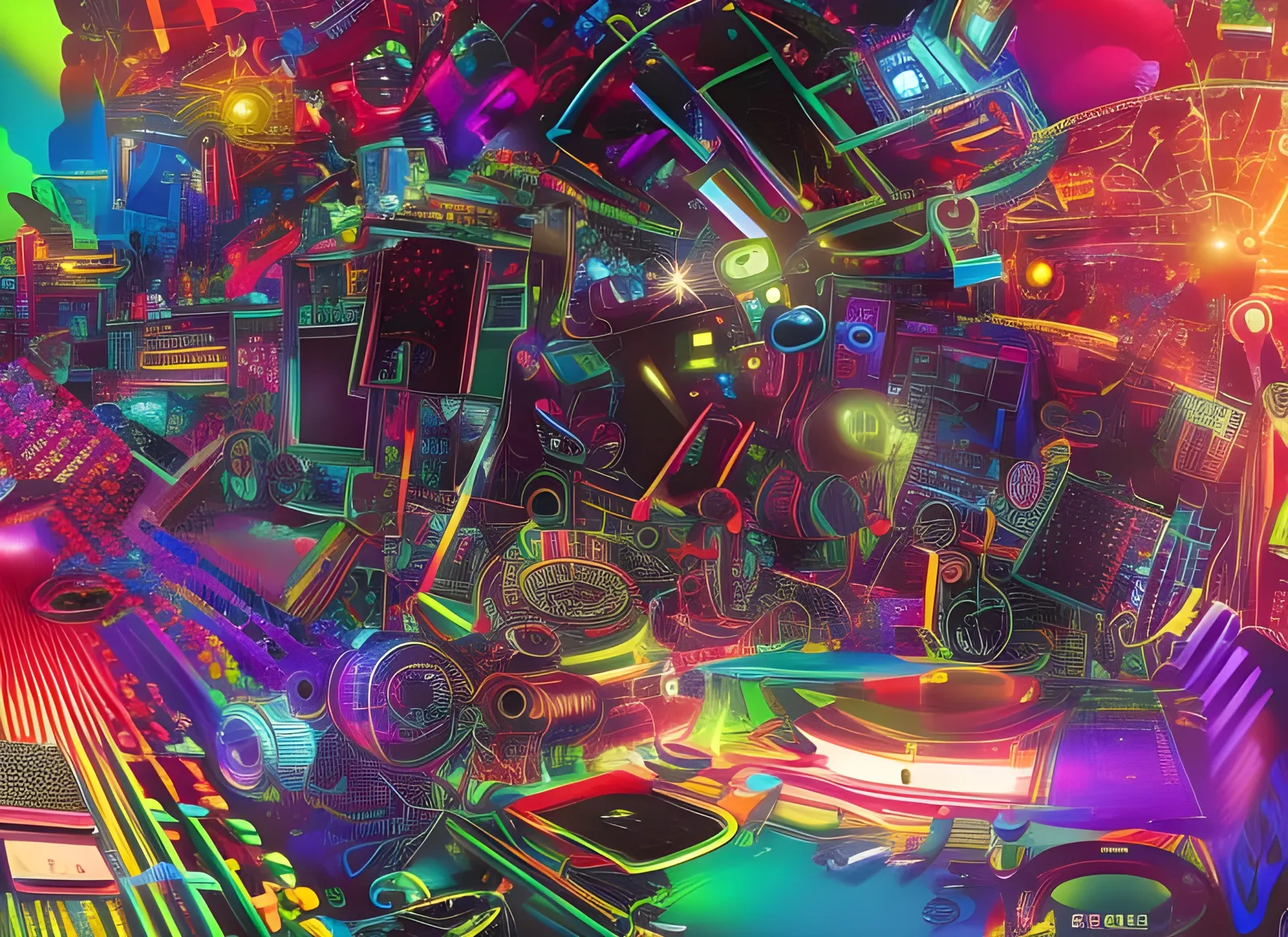
 The Intersection of Psychedelic Rock and Other Art Forms
The Intersection of Psychedelic Rock and Other Art Forms
Leave a comment
Psychedelic rock is much more than just a genre of music. Born in the mid-1960s, it was deeply tied to the counterculture movement, with its roots in experimental drug use, rebellion against mainstream society, and a desire to expand consciousness. Psychedelic rock soon evolved into a powerful force of expression, influencing a wide range of other art forms and creating a rich intersection between music and visual art, film, fashion, literature, and performance art. This article will explore how the intersection of psychedelic rock with these creative fields led to a vibrant, transformative era that still echoes in modern culture today.
Psychedelic Rock and Visual Art
The intersection of psychedelic rock and visual art is perhaps one of the most iconic collaborations in 20th-century culture. Both mediums were shaped by the same desire to transcend the ordinary and reach new levels of perception.
Album Art and Posters
One of the most visible manifestations of this intersection is in the album art and concert posters that defined the era. Psychedelic rock bands sought to create an immersive experience that began even before listeners played their music. This resulted in some of the most visually striking album covers of all time.
Take, for example, Sgt. Pepper’s Lonely Hearts Club Band by The Beatles, whose cover art features a surreal and colorful collage of influential figures, or Pink Floyd’s The Dark Side of the Moon, which presents a simple yet powerful image of a prism dispersing light into a rainbow. The visual art of these albums was not just supplementary to the music—it was an extension of the psychedelic experience the musicians sought to convey.
Concert posters, too, became emblematic of the intersection of psychedelic rock with visual art. Artists like Wes Wilson, Stanley Mouse, and Victor Moscoso created vivid, swirling posters to promote shows for bands like The Grateful Dead and Jefferson Airplane. These posters often featured distorted, flowing fonts and optical illusions that mirrored the mind-bending qualities of the music. The intense colors and abstract designs were a visual representation of the altered states of consciousness that psychedelic rock evoked, blending influences from Art Nouveau, Surrealism, and Pop Art.
Painting and Psychedelic Imagery
Beyond album covers and posters, the psychedelic movement also influenced contemporary painting. Artists like Mati Klarwein, whose surreal and colorful works graced album covers like Santana’s Abraxas, were directly inspired by the same hallucinatory experiences that shaped psychedelic rock. Klarwein’s work is characterized by intricate, symmetrically arranged figures and landscapes, often merging spiritual iconography with geometric patterns that feel as though they could have come straight from the subconscious.
Artists associated with the psychedelic movement, particularly those who engaged in the visual arts, often employed similar techniques: the use of bright, highly saturated colors; the depiction of swirling, flowing shapes; and the blending of real and imaginary worlds. These techniques are similar to the auditory effects of psychedelic rock, with its heavy use of reverb, delay, and phasing to create a sense of depth and unreality. The intersection of psychedelic rock with painting represents an effort to capture, in visual terms, the same transcendental experiences the music provided.
Psychedelic Rock and Film
The visual world of psychedelia was not confined to static images; it also bled into the world of film, especially through experimental techniques that paralleled the genre’s sonic innovations.
Psychedelic Cinema and Music Videos
Psychedelic rock had a profound influence on the development of psychedelic cinema. Films like Yellow Submarine (1968) perfectly encapsulate the intersection of psychedelic rock and film, with their bold, abstract animation style that visualized the hallucinogenic qualities of the music. The Beatles’ music played a key role in these films, creating an experience where sound and visuals were deeply intertwined. Psychedelic films used bright, swirling colors, kaleidoscopic patterns, and abstract imagery to evoke the same sense of disorientation and wonder that the music itself achieved.
One cannot overlook the contributions of music videos in further merging psychedelic rock with film. Pink Floyd’s The Wall (1982) stands as a prime example of how music videos became not just a marketing tool but an extension of the album’s themes. With its mix of live-action and animation, The Wall used visuals to convey complex psychological and political messages, deeply influenced by the psychedelic movement.
Bands like Jefferson Airplane and The Jimi Hendrix Experience also used visuals in their performances and videos that enhanced the ethereal qualities of their music. Through animation and abstract imagery, music videos evolved into an art form that worked symbiotically with psychedelic rock, delivering a multi-sensory experience that blurred the line between sound and sight.
Influence on Modern Experimental Film
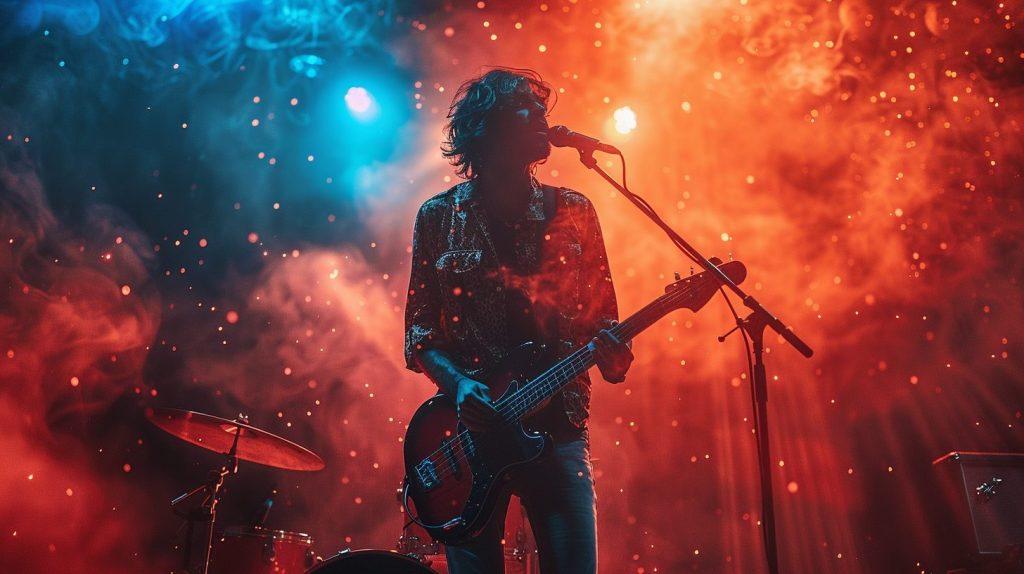
The influence of psychedelic rock on film didn’t end with the 1960s. Even today, modern experimental filmmakers draw on the visual language created by the psychedelic movement. Directors like Gaspar Noé and David Lynch have used extreme color saturation, distorted perspectives, and non-linear storytelling in ways that feel deeply connected to the legacy of psychedelic rock.
Stanley Kubrick’s 2001: A Space Odyssey (1968), though not a “psychedelic” film per se, utilized visual techniques such as long, trippy sequences filled with bright colors and abstract shapes that echoed the psychedelic rock aesthetic. These films aimed to immerse the audience in the experience in much the same way that bands like Pink Floyd or The Doors used extended instrumental passages and mind-bending sound effects to create a similar immersive experience.
The intersection of psychedelic rock and film created a visual grammar for representing altered states of consciousness, a language that continues to influence modern cinema’s use of vibrant, surreal visuals and innovative soundscapes.
Psychedelic Rock and Fashion
The intersection of psychedelic rock and fashion is another key area where music had a profound influence on broader cultural trends. Psychedelia did not just influence what people heard—it influenced what they wore, as well.
Psychedelic Fashion in the 1960s and 70s
The 1960s saw the emergence of a fashion movement that reflected the vibrant, mind-expanding ethos of psychedelic rock. Fashion designers and consumers alike embraced the eclectic and daring styles that reflected the desire for freedom and self-expression characteristic of the counterculture movement.
Bold patterns, bright colors, and unconventional materials dominated the psychedelic fashion scene. Items like tie-dye shirts, bell-bottom pants, and garments adorned with paisley prints became symbols of the era. The clothing worn at concerts and festivals like Woodstock or Monterey Pop Festival reflected the outlandish and free-spirited nature of the music itself.
Fashion designers such as Ossie Clark and Mary Quant, along with influential fashion houses like Biba, embraced the psychedelic aesthetic. Their designs often mirrored the surreal, colorful, and mind-bending qualities of psychedelic rock. Eastern spirituality also made its mark, with many young people donning clothing inspired by Indian and other Eastern cultural traditions. The overlap between psychedelic rock and fashion became a crucial part of the identity of the counterculture movement, representing rebellion against the mainstream and a search for personal and spiritual enlightenment.
Legacy of Psychedelic Fashion in Contemporary Culture
Even decades later, the intersection of psychedelic rock and fashion continues to influence modern trends. Fashion shows, music festivals, and high-fashion brands still borrow heavily from the psychedelic aesthetic. At events like Coachella, attendees often embrace looks that include elements of 1960s and 1970s psychedelic fashion: bold colors, flowing silhouettes, and eclectic accessories. Designers like Alessandro Michele at Gucci and Jeremy Scott at Moschino have incorporated elements of psychedelia into their collections, keeping the spirit of the intersection of psychedelic rock and fashion alive in the present day.
The cultural influence of psychedelic rock on fashion remains significant because it helped bridge the gap between personal expression and collective identity, a legacy that continues in today’s fashion landscape.
Psychedelic Rock and Literature
The intersection of psychedelic rock with literature is another profound example of how the music of the 1960s and 70s shaped cultural expression in multiple art forms. Writers and musicians alike drew on the same countercultural philosophies, and their works reflected common themes of rebellion, expanded consciousness, and a deep questioning of societal norms.
Literary Influences on Psychedelic Rock
The Beat Generation, with writers like Jack Kerouac and Allen Ginsberg, had a substantial influence on the psychedelic rock movement. Many musicians of the time were avid readers of Beat literature, which emphasized spontaneity, rejection of materialism, and a quest for deeper meaning through experience.
Aldous Huxley’s The Doors of Perception (1954) played a crucial role in shaping the psychedelic rock movement. Huxley’s account of his experiences with mescaline inspired many musicians to experiment with altered states of consciousness and incorporate those themes into their music. The band The Doors even took their name from Huxley’s book, further cementing the intersection of psychedelic rock and literature.
Jefferson Airplane’s hit White Rabbit is another classic example of this intersection. The song’s lyrics are filled with references to Lewis Carroll’s Alice in Wonderland, using the story’s imagery to draw parallels between Alice’s fantastical experiences and the hallucinogenic experiences associated with psychedelic drug use.
Psychedelic Themes in 1960s-70s Literature
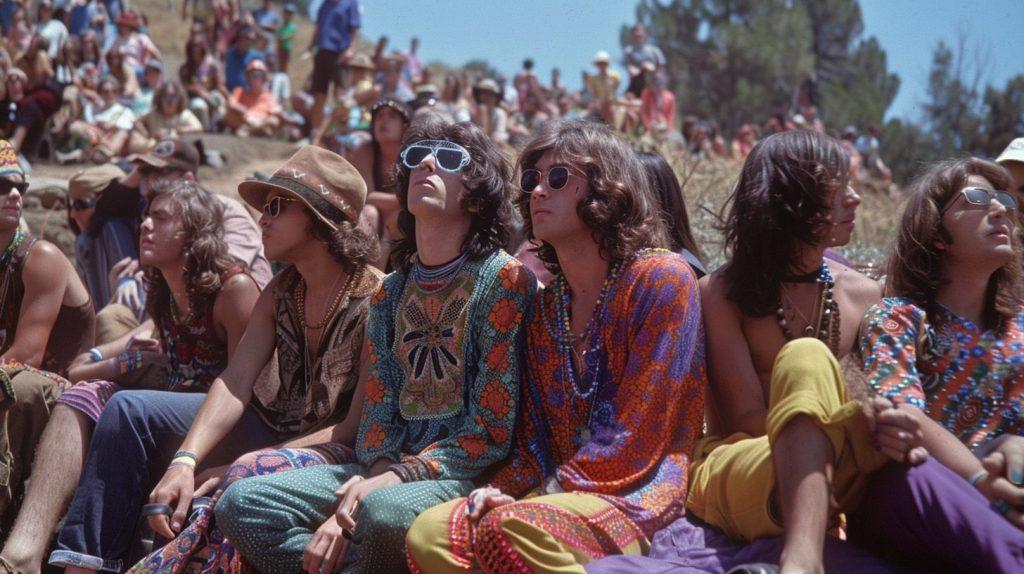
The intersection of psychedelic rock and literature went beyond mere lyrical references. Writers such as Tom Wolfe, in his seminal book The Electric Kool-Aid Acid Test (1968), chronicled the lives and experiences of figures in the psychedelic rock movement, like Ken Kesey and The Merry Pranksters, whose bus trips across the U.S. became legendary symbols of the countercultural revolution.
Hunter S. Thompson’s Fear and Loathing in Las Vegas (1971) is another example of a literary work deeply intertwined with the psychedelic movement. Thompson’s “gonzo” style of journalism mirrored the chaotic and free-form nature of psychedelic rock itself. His narratives often strayed from traditional storytelling, focusing instead on personal experience and surreal interpretations of reality, similar to the improvisational style and mind-bending themes found in psychedelic rock.
Psychedelic themes also found their way into more mainstream works of fiction during the era. Writers such as Philip K. Dick explored themes of altered realities, drug-induced states, and the questioning of identity, all of which resonated deeply with the psychedelic ethos. Psychedelic rock, in turn, borrowed heavily from these literary works, often infusing song lyrics with themes of escapism, spirituality, and alternative consciousness.
The symbiotic relationship between literature and psychedelic rock is a testament to the deep intellectual and cultural currents that flowed through both art forms. Both mediums questioned established norms and sought to push the boundaries of human experience, resulting in a rich intersection that produced some of the era’s most enduring works of art.
Psychedelic Rock and Performance Art
One of the most immersive intersections of psychedelic rock with other art forms occurred in the realm of performance art. Psychedelic rock concerts of the 1960s and 70s were much more than simple musical performances—they were multisensory experiences that blended music, visual art, and avant-garde performance techniques to create something truly unique.
Psychedelic Light Shows and Concert Experiences
Live performances by iconic psychedelic rock bands like Pink Floyd, The Grateful Dead, and Jefferson Airplane were not just about the music. These concerts became full-scale visual spectacles, thanks to the integration of psychedelic light shows, which were designed to enhance the audience’s experience and complement the hallucinogenic nature of the music.
Liquid light shows, lasers, and projected images transformed concert venues into otherworldly spaces. The swirling, fluid projections of light and color responded to the rhythms and dynamics of the music, creating a sensory experience that made the listener feel as though they were inside the music itself. Artists such as Bill Ham and The Joshua Light Show were pioneers in this field, creating visual displays that defined the concert-going experience during the height of the psychedelic era.
The fusion of visual art and sound in these performances exemplifies the deep intersection of psychedelic rock with performance art. These shows were designed to evoke altered states of consciousness, much like the music itself, and often became communal experiences where the audience felt connected to the music, the visuals, and one another.
Influence on Avant-Garde and Theatrical Performances
Beyond concerts, the intersection of psychedelic rock with performance art extended to avant-garde and theatrical productions. The Velvet Underground’s collaboration with artist Andy Warhol’s Exploding Plastic Inevitable is one of the most famous examples of this crossover. Warhol’s multimedia show featured the band playing live music while avant-garde films and light shows were projected onto the performers and the audience. The result was a disorienting, all-encompassing experience that blurred the line between performance, visual art, and music.
This blending of art forms created a new, immersive approach to performance that would influence future generations of artists. Today, immersive theater productions like Sleep No More and modern-day multimedia concerts draw inspiration from these early psychedelic performances, proving that the intersection of psychedelic rock and performance art continues to shape contemporary culture.
Conclusion – A Multisensory Legacy—Psychedelic Rock’s Lasting Influence Across the Arts
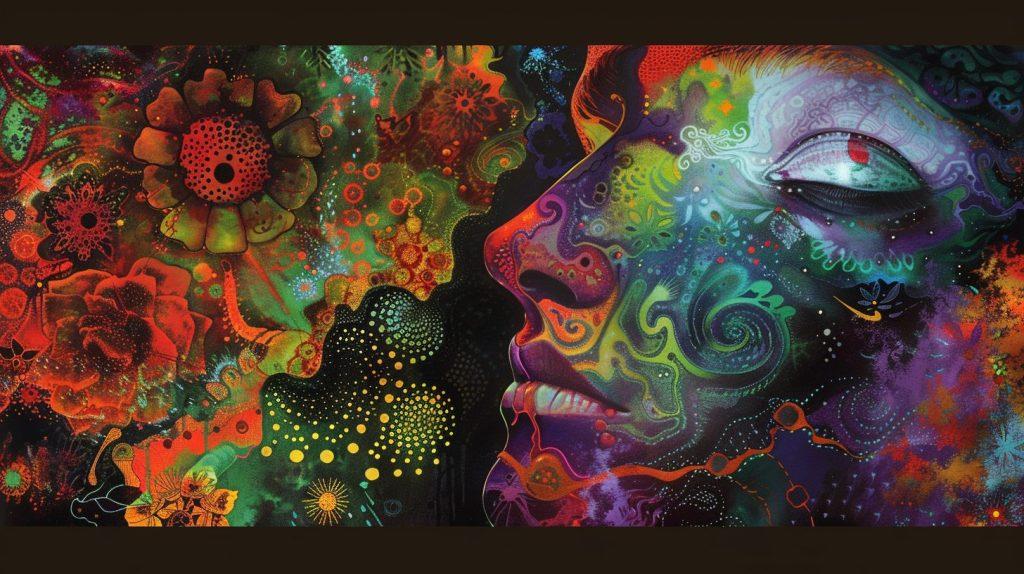
The intersection of psychedelic rock with other art forms created an era of unparalleled creativity and experimentation. What began as a musical genre soon became a broader cultural movement that transcended its boundaries, influencing visual art, film, fashion, literature, and performance. Psychedelic rock was more than music—it was a multisensory experience that captured the spirit of an era and invited listeners, viewers, and participants to explore new ways of perceiving the world around them.
From iconic album covers to avant-garde films, from mind-bending concert experiences to fashion trends that embraced bold self-expression, the legacy of psychedelic rock continues to resonate in modern creative culture. This intersection of psychedelic rock with other art forms was not just about creating something new—it was about breaking down the barriers between art forms, blending sound, visuals, and performance in ways that were previously unimaginable.
Even today, the influence of the psychedelic rock movement can be seen in contemporary art, music, fashion, and film. The spirit of experimentation and rebellion that defined the psychedelic era lives on, reminding us that the boundaries of creativity are constantly evolving, and that the intersection of art forms has the power to transform the way we see and experience the world.
Categorised in: Psychedelic

